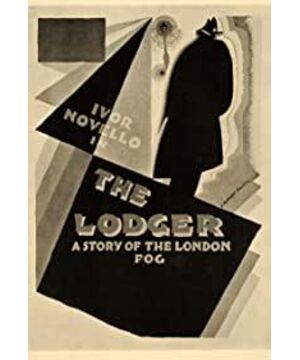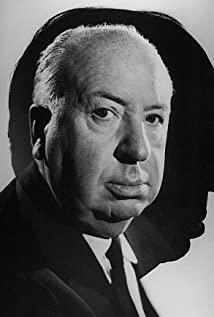The film is based on "Jack the Ripper" and tells the story of a young man who came to ask for rent against the background of successive murders of blond girls, and the homeowner's family suspected that this strange tenant was a serial killer...
The ending of the story is too bright, and the contrast with the whole danger signal before is very abrupt. Although it is to highlight the mysteries deliberately created by misunderstandings, it may be more perfect if it is adapted into an open ending. A murderer who is good at disguise, a series of traps that thought that a good person was caught by mistake is actually a good person who killed a good person by mistake, and a mystery that can never be solved when he thought that he had gained love, compared to a good person with a secret, isn't it? Are controversial good guys more attractive?
Many scenes in the film are amazing:
The tenant's first appearance is so impressive that it will not be outdated even if it is used by future directors: the costume similar to the killer, the glasses from low-hanging listlessness to sudden widening anxiety, the external environment. The darkness and the light in the house made this deep border visitor indistinguishable between good and evil. It can be said that the focus of the whole film is fixed by this one shot. We are spectators, we are also self-appointed judges, and the real us are the group of passers-by who listen to the wind and rain at the end, thinking that the people in front of them are killers, so they gather together. beat it. The police gave another truth and immediately patted the butt and left. Rather than saying that Hitchcock was making a suspense story, it would be better to say that he was enjoying the process of slapping the audience.
When the tenant walked upstairs on the first night, the floor became transparent, and the audience directly saw the tenant's feet walking up and down overhead. The wonderful thing about this lens is that it greatly satisfies the voyeuristic desire of the viewer. All our speculations, doubts, and fears stem from peeping and guessing at others. When he took the initiative to incarnate a judge, he first became a voyeur, staring at the abyss for too long, so he was stared at by the abyss. So from the old woman eavesdropping on the tenant's whereabouts, to following the old woman's eyes and turning over the tenant's house, until the police arrived to personally search the locked cabinet, the director was satisfied from the beginning to the end, it was the voyeuristic desire of the viewers , this carnival really came to a climax in "Rear Window". Through voyeurism to release fear, satisfy selfish desires, and use collective justice to strike individuals to gain a sense of heroism, what is magnified is actually the insignificance and sadness of the individual.
In this scene where the old woman eavesdrops on the tenant going downstairs, the scene where the tenant walks down the spiral staircase with handrails is amazing, and it has been used for reference in many movies later.
The signals generated by the tenant’s actions all remind the audience of the identity of the murderer: the portrait of the blond girl makes him anxious; he walks back and forth in the room without sleeping at night; he also sneaks out at the time of the murder case. ; The first person who died was his sister, who was dancing in his arms before the lights went out, and was killed immediately; although the things in the bag related to the murder were said to be for the purpose of investigating the truth, they were locked in a closet. It's not justified that China even attacked the police and absconded.
There is a story in the ancient book called "Suspected Neighbor Stealing Axe", which is similar to the film's method: a person suspects that his neighbor has stolen his axe, so he looks like a thief in every move he does, and waits until his axe is found, then watch Neighbors are nothing like bad people. The film preemptively created the illusion of confusing the audience, but when the truth came, it let a group of rabble hang the innocent male protagonist. From the evil and cruel serial killer to the direct transition to the second generation of gentlemen who bear the burden of humiliation, the ups and downs are so exciting that people can't help but want to pee.
Although it is the ending of a lover who ends up getting married, but the heroine is obviously cheating on a third party. She doesn't refuse her boyfriend's proposal, and she doesn't give up when facing her tenant's handsomeness. In the end, she has an affair with her lover and is discovered by her boyfriend. It's a face turned, probably the earliest green tea bitch in movie history.
Another question: Are there episodes with lyrics in the version you watched?
View more about The Lodger: A Story of the London Fog reviews








